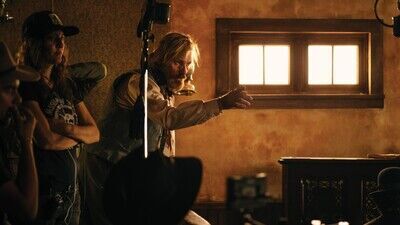When the latter’s borderline psychotic son, Weston (Solly McLeod), begins to go after Vivienne himself and Olsen discovers what has happened when he returns from the war, it kicks off the expected array of violent retribution. But it also forces Olsen and Vivienne to come to terms with what has happened to them in the hopes of moving on.
Throughout “The Dead Don’t Hurt,” which premiered at the Toronto International Film Festival last fall and which arrives in theaters this Friday, Mortensen may sport a standard-issue cowboy chapeau, but it’s hardly the only hat that he would find himself wearing throughout its production. In addition to co-starring in the film, he directed it (his first effort since his 2020 debut “Falling”), penned the screenplay, and even composed the score.
Recently, Mortensen, via the miracle of Zoom, sat down with RogerEbert.com to talk about the film, the ways it subverts any number of genre expectations, and how directing has affected his work as an actor.
Throughout your career as an actor, you have appeared in several Westerns—“Hidalgo,” “Appaloosa,” “Young Guns 2.” With “The Dead Don’t Hurt,” you not only co-star, you have also written, directed and composed the score. Is this a genre you’ve always felt a particular affinity for, even before becoming an actor?
Oh, definitely. Like most kids of my generation, I grew up very early in my life seeing them. There were several series on TV, for one thing, and it wasn’t that unusual to be able to go to the movie theater once in a while and see a Western back in the early ’60s. I also grew up as a kid riding horses and imagining and fantasizing, like a lot of kids of my generation, of being a gaucho or a cowboy or even a Native American warrior. Westerns are something that I’ve always liked.
I didn’t necessarily intend to write a Western when I started writing this story. I was writing about a woman named Vivienne and her life, her childhood, and so forth. I was trying to create a woman with an independent spirit and a strong interior life. I thought it would be more of a challenge for her and a more interesting contrast to place that woman in a Western setting, a society mostly devoid of law and order and dominated by a few unscrupulous and violent men. Once I realized that it would be a Western, I enjoyed documenting everything and making sure that the look was like that of a classic Western, with the photography and getting all the historical details right—the language, the vocabulary, the architecture, the horsemanship. I really enjoyed that.

